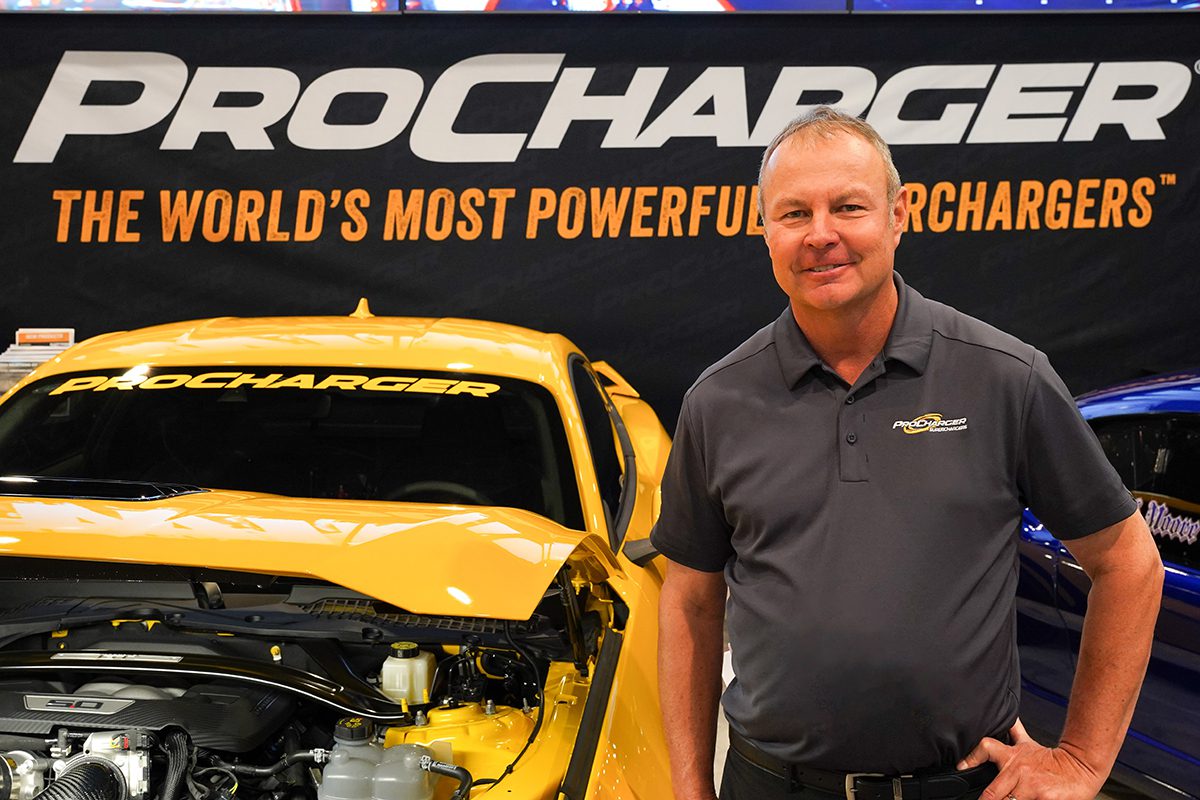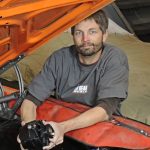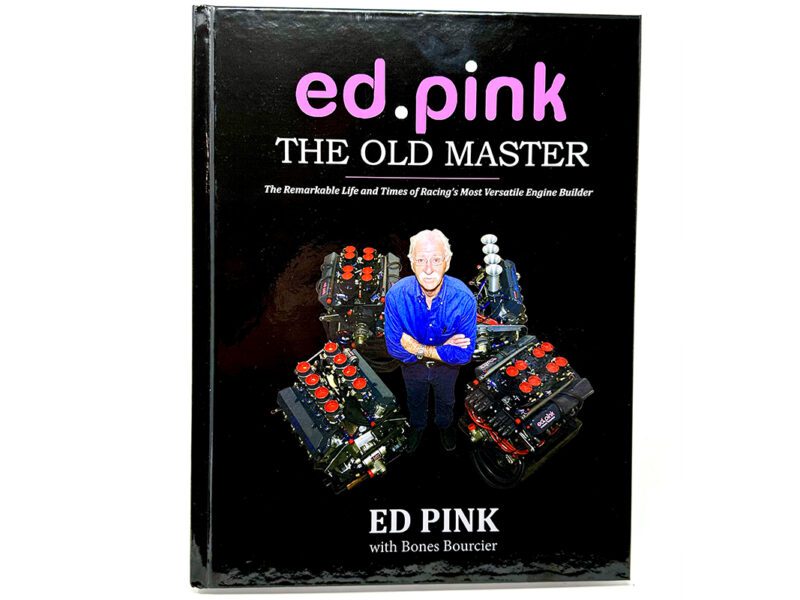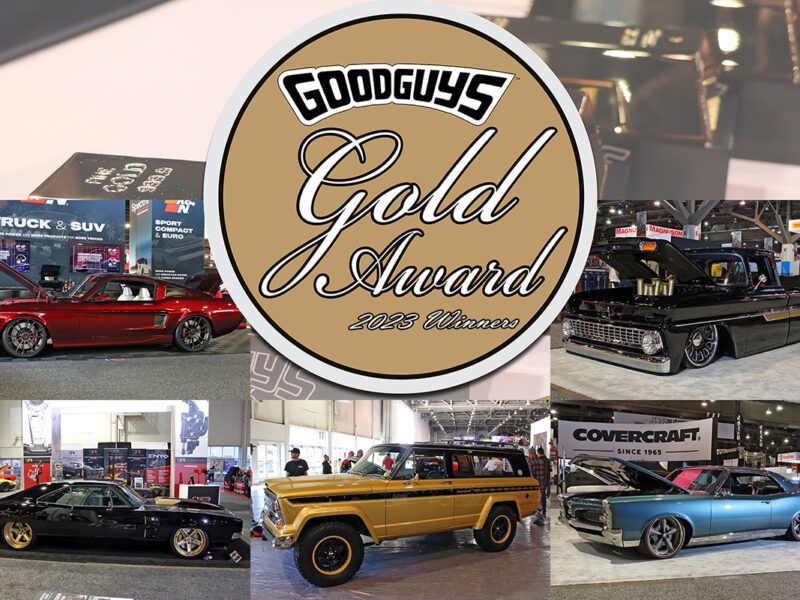5-Minutes with Kyle Fickler of ProCharger (and SEMA Chairman of the Board)
Kyle Fickler is a great example of a professional who still plays with cars. Actually, it’s better to reverse that statement, as he’s more of a car guy who has also built a career in the performance aftermarket. Today Kyle is the Director of Business Development at ProCharger and is serving as the Chairman of the Board for SEMA, the Specialty Equipment Market Association.
Kyle received his bachelor’s degree(s) and Law degree from the University of Montana but chose to follow his passion for cars by starting his career with Aeromotive Fuel Systems. Over the years he has been heavily involved with the industry and various SEMA committees and even found time to score a couple NHRA Wallys in his Super Comp dragster. His wife, Debra, has also scored wins in Stock Eliminator and their daughter, Danika, is an NHRA D5 Summit E.T. Series Champion. We were able to steal a few minutes with Kyle during the SEMA Show.
GG: You chose an automotive aftermarket career rather than practicing law. Why?
Kyle Fickler: Once I graduated law school, I knew I had to do something in motorsports. I was practicing law the morning I cold called Steve Matusek. He was working on the business plan for Aeromotive and I needed a fuel system for our dragster. That was my first job in the performance industry. I just had to do what I love.
GG: What are the biggest changes you’ve seen in your 30-plus years in the aftermarket?
Fickler: I remember when it was said that EFI was going to kill hot rodding. Maybe I believed it, too, but look how far the industry has come with aftermarket EFI and the ability to tune OE EFI. It makes it so easy to build big horsepower. Not too long ago, 600hp on the street really got your attention, but now it’s easy to build 800–1,000 reliable horsepower on pump gas or E85 with a ProCharger!
 GG: What do you see as the biggest challenge for hot rodders in the future?
GG: What do you see as the biggest challenge for hot rodders in the future?
Fickler: The performance aftermarket is fighting to maintain our right to modify, repair, and enjoy our vehicles. California and other states are trying to enact outright bans on internal combustion engines (ICE), which we will oppose vigorously. SEMA and enthusiasts alike need to protect our right to choose between technologies, and alternative fuels for internal combustion engines should be part of the conversation. The courts are questioning if the EPA is exceeding its authority in these instances.
GG: What initiatives is SEMA taking that are specifically geared toward the vintage vehicle portion of the hobby?
Fickler: SEMA works hard to maintain a good working relationship with the California Air Resources Board (CARB), and understand they have a job to do. Many states follow California’s lead on emissions, so the SEMA DC team works hard to keep California in alignment with key SEMA initiatives.
SEMA is constantly engaged at the state and federal level on topics such as exhaust noise. A recent example includes a new law in Tennessee that implements a fair, objective method for determining compliance with the law, rather than relying on subjective judgments on whether an exhaust system is too loud.
Another new law in West Virginia is the SEMA-supported “Antique Fleet” plate program, whereby the owner of five or more registered antique vehicles can use a single license plate. For more information about legislation that might affect your state, enthusiasts can contact the SEMA Action Network.
GG: Many West Coast enthusiasts were alarmed by recent reports of California gathering information on classic car ownership and use, and the prospect of possible vehicle usage restrictions. How has SEMA responded?
Fickler: SEMA was way out in front on this issue and did a great job educating enthusiasts on what was happening and potential outcomes. We recently worked to pass legislation to allow cruising to return legally in California. Previously, local authorities could pass ordinances that regulated or prohibited cruising. This effort follows a resolution approved by the legislature last year to celebrate the history and culture of automobile cruising and encourages local officials and law enforcement to work with local car clubs to conduct safe cruising events.
GG: As a drag racing family, how do you recommend getting younger people involved with motorsports? 
Fickler: I think it starts with exposure to the sport, including the addition of the Junior Street and High School classes that NHRA recently added. Sanctioning bodies are getting better at finding youth where they are, even before they get on their phones.
You can start in Junior Dragsters and Quarter Midgets when you are five years old, so if the child is inclined, get them in a seat. My daughter recently joined the Formula SAE team at Colorado State and is working to introduce some of the road race-oriented students to drag racing. Danika recently commented that she would have felt intimidated trying to start racing if she wasn’t a second-generation racer, so we need to make it a seamless transition from experiencing the track in your daily driver to moving up to a dedicated race car. The same thought process applies to hot rodding. Let’s get them to an event and experience what it’s all about.
GG: What classic or muscle car would you like to have in your garage?
Fickler: I absolutely love Bonneville-style three-window coupes and having a crank driven ProCharger feeding an early Hemi would be a great way to pay tribute to those early pioneers. Parked next to it would be a restomod ’70 Hemi Cuda or ’69 Dodge Daytona, though I would struggle deciding between a Gen II and Gen III Hemi. My first car was a ‘69 Charger, so I still have a soft spot for B- and E-body Mopars. The most fun I have had this year, though, was in our ProCharged C8 beta cars on the way to a race in Oklahoma. By the time I got home I was ready to sell half my fleet to build one!





